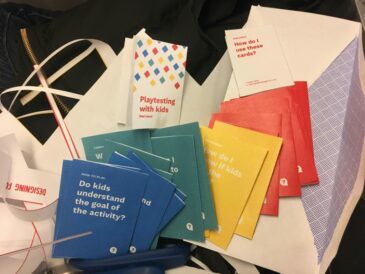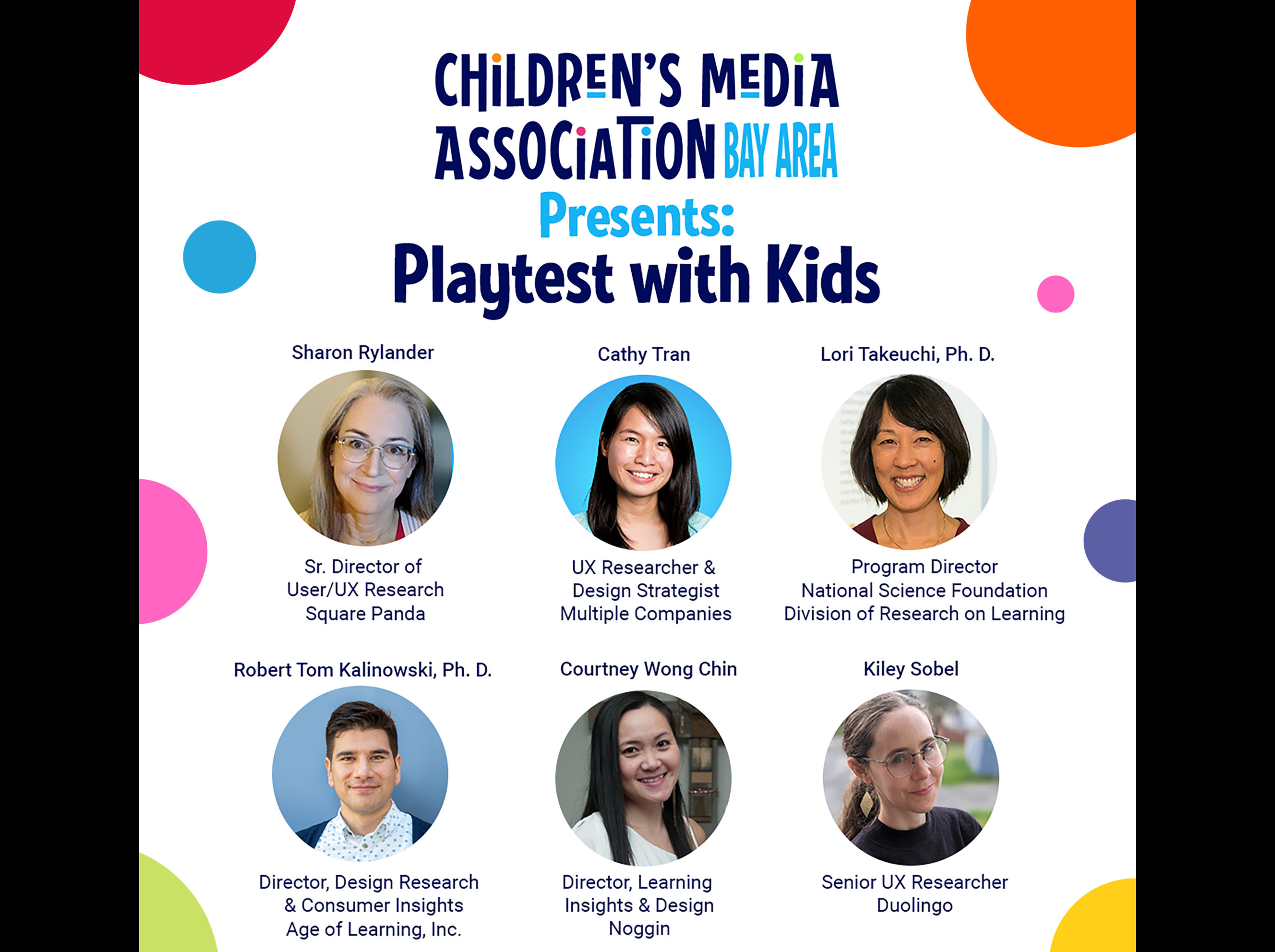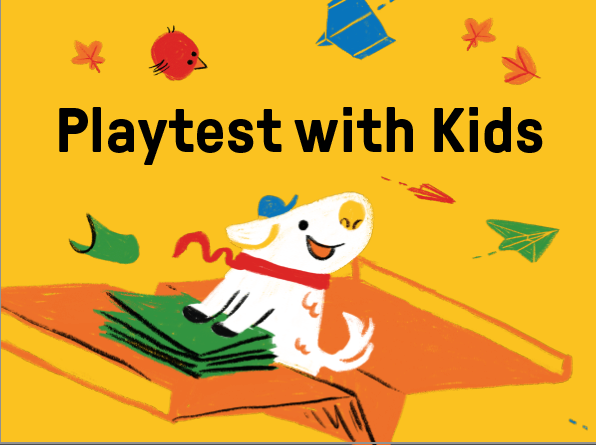Conducting playtesting with kids can be tricky. It can be challenging to get feedback from children that can really help producers make great products—but it’s definitely not impossible. We are thrilled to share Playtest with Kids, a new digital toolkit that shares best practices gathered from dozens of kids researchers.
“Do you like this?” seems like a very reasonable question to ask children. But we’ve noticed that asking this seemingly-straightforward question will often result in an immediate “yes!” —not because kids actually like the product but because they want to please the grown-ups conducting the playtesting session. Often, kids just want to be nice. So how do we get around that?

One of my favorite techniques from the Playtest with Kids toolkit is to ask if they think a product is for someone younger or older than them.
“I’m not sure what age this game is good for—do you think it should be for kids younger than you, about your age, or older than you?”
If they say younger or older, ask: “Why younger/older? How should I change it to make it better for your age?”
I noticed that when I asked this question, kids became really honest about their opinions. They would tell me the game was for a younger kid because the character was “baby-ish” or it was for an older kid, because the gameplay was too confusing for them to understand. This was meaningful feedback for our product team.
The Playtest with Kids toolkit includes this method, and many more, all shared by those who playtest with kids across different types of products including apps, television, voice assistants, and physical toys. This project grew out of an opportunity that I, along with my friends and collaborators Maya Sussman and Megan Huang, saw in our own organizations and our colleagues’ organizations, where many recognize the benefits of conducting research with kids, but lacked the resources to do it effectively.
It really took a village to bring this project to life. The methods were informed by dozens of experts in the field, from organizations including Google, YouTube Kids, Osmo, Square Panda, Toca Boca, Sago Mini, Facebook, MIT Media Lab, and Sesame Workshop. We shared early versions of the resource, including a card deck prototype, and more than a hundred volunteers reviewed and tested it. This included students who were new to playtesting as well as researchers, designers, and product managers who work on children’s products.

What started as a card deck evolved into a website when we realized how playtesting needs change over the time—for instance, the demand for researching with voice assistants grew as well as the need for remote techniques.
As we thought about partnerships and a home for our labor of love, the Joan Ganz Cooney Center at Sesame Workshop was on the top of that list. We were thrilled when Lori Takeuchi, who was Head of Research at the Cooney Center at the time, wanted to partner with us to make this resource widely available to the kids’ product community. We’ve spent the past year putting finishing touches on the content and design of the website with Kiley Sobel (Duolingo) and Catherine Jhee. Sesame Workshop contributed case studies and playtesting protocol templates—fittingly, it was the first children’s program to utilize formative and summative research with children to plan, produce, and evaluate a television show.
Playtest with Kids just launched this month at the ASU+GSV summit. We were thrilled to have Jen Kotler of Google and Mariya Dey Roy of Amazon lend their support for the website and share their playtesting experiences.
We hope that you find the Playtest with Kids Toolkit useful – and fun! Please share it broadly. We hope that it will help inspire teams to implement thoughtful and productive playtesting sessions that lead to great products.


